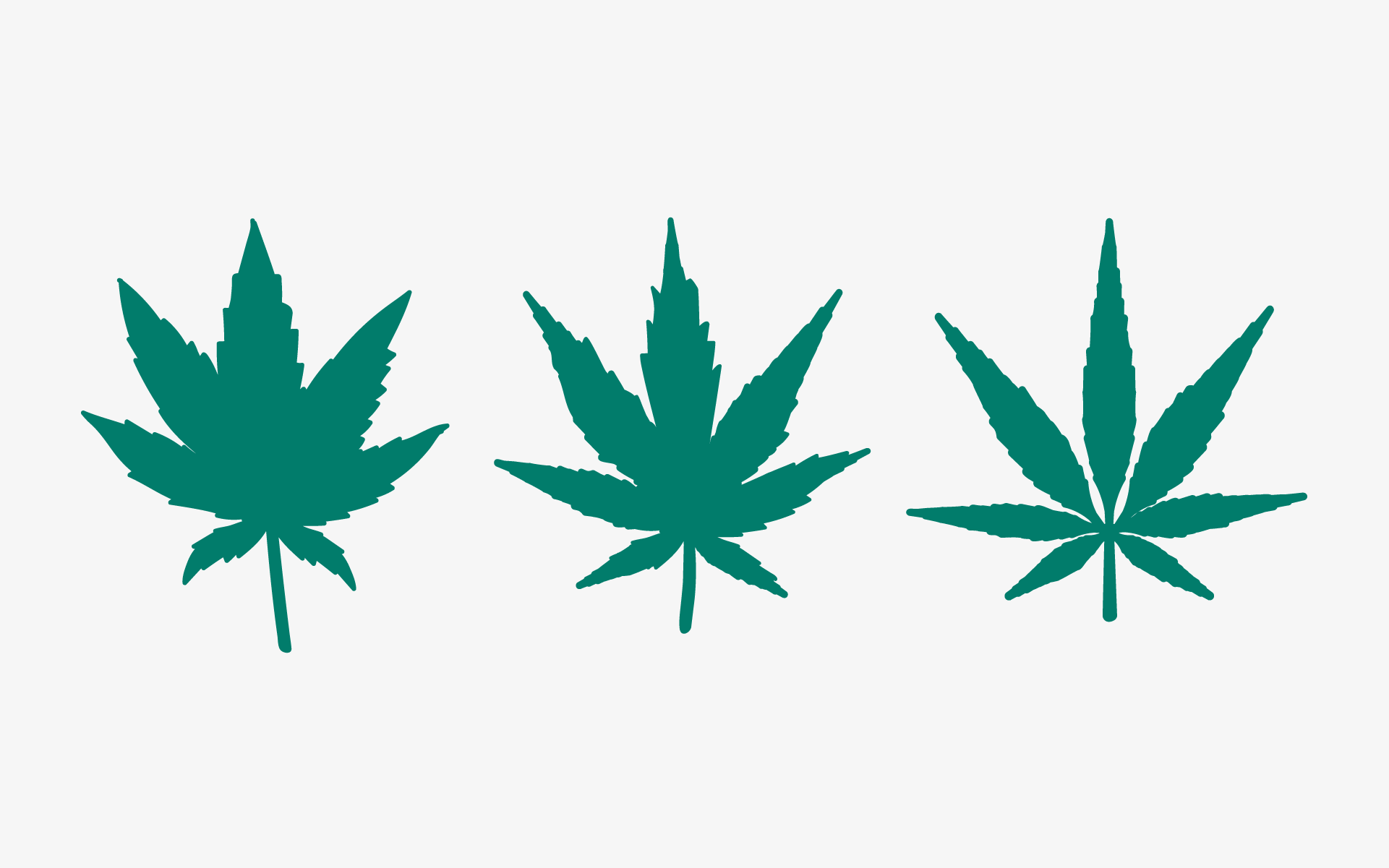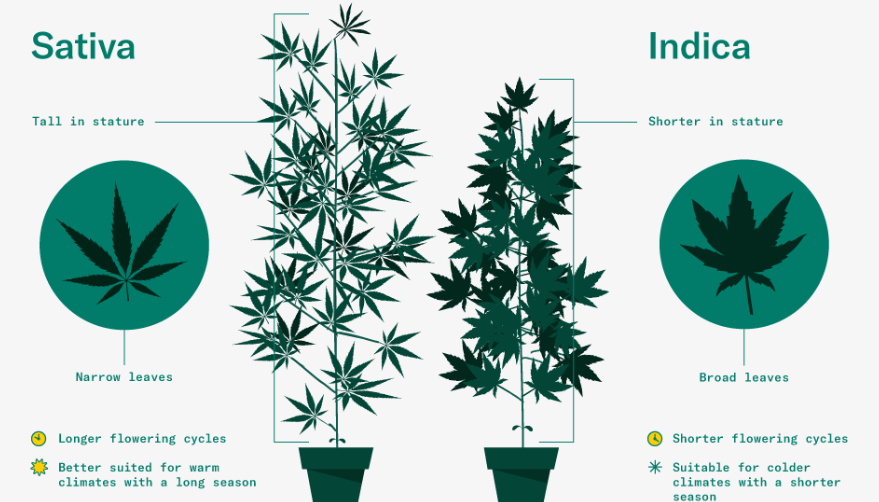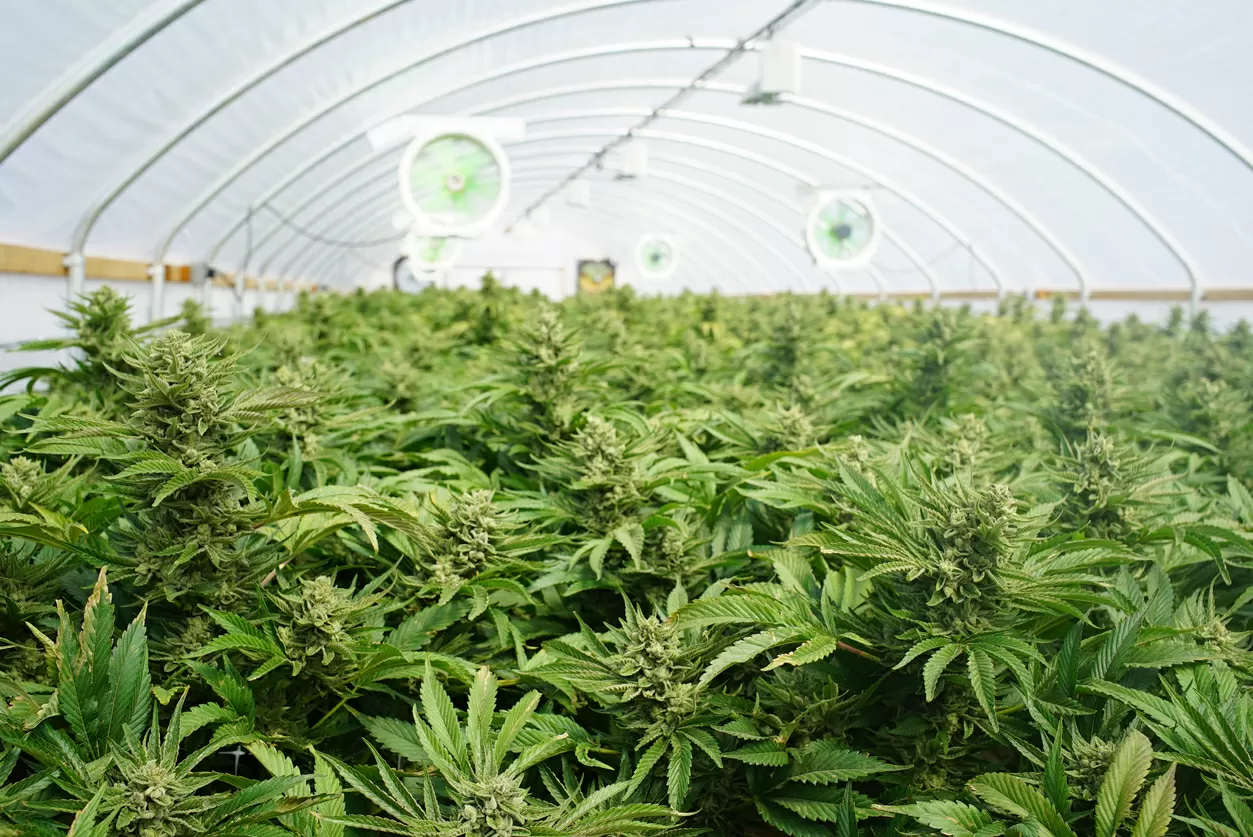It's the year 2020 and everyone knows what marijuana is and its properties: over the years, it has become one of the most beneficial plant substances. Now, more than ever before, preconceptions and prejudices about marijuana are gradually being eroded and tolerance is increasing, which is fortunately clearing the way for the idea that marijuana is a drug.
Many people are falling in love with it, and celebrities are no exception. The world-famous rapper Snoop Dogg, who for years has been an avid supporter of marijuana use, advertising his innate passion for the good weed without making a secret of it, has chosen to be an integral part of the industry, launching his own cannabis brand, 'Leafs of Snoop'.
He therefore appears to be a character with a strong entrepreneurial intelligence, as he has chosen to invest in a sector that, according to statistics, is expected to grow exponentially over the next ten years.
Whether it is CBD oil or medical cannabis, marijuana use involves millions of people around the world, and does not seem to want to stop. Here is everything you need to know about marijuana and its derivatives.
Marijuana: what it is and why it is so popular
Marijuana, often referred to alternatively by terms such as herb, ganja or kief, is the plant material characterised by the inflorescences produced by female cannabis sativa plants.
These flowering tops are usually harvested at the end of the summer season and then dried and cut for consumption.
It is usually presented as a sort of green, brown or greyish 'chop', or the inflorescences are kept intact, especially if they are of high quality.
The traditional Indian expression 'bhang', which is also particularly widespread, identifies a less valuable plant material, usually offered at low cost, characterised only by the leaves of the cannabis plant or, alternatively, a kind of marijuana herbal tea, a special hot drink which, in addition to hemp, contains herbs, spices and fruit extracts.
The presence of seeds in marijuana is usually synonymous with the poor quality of the strain used in cultivation, as well as the lack of care taken by the grower, who in this case did not separate the male and female specimens in time.
The so-called 'sensimilla', named after a particularly intense Californian marijuana variety that is obtained through careful genetic selection and has no seeds in the bud, is therefore very popular with connoisseurs. This is just one example, as the countless marijuana strains available are often referred to by fancy names that somehow help to further attract the consumer. White Widow, Orange Bud, Purple Haze, Lemon Haze, Amnesia Haze and Super Skunk are undoubtedly some of the most popular strains sold in the major weed shops, the same ones that can be taken with a bong or by rolling a simple joint.
The concentration of legal CBD as well as THC in marijuana is extremely variable. Generally speaking, the presence of tetrahydrocannabinol is between 1 and 7%, although there are varieties of marijuana that can easily reach 20 or 22%. In recent years, there has been a considerable increase in the THC levels of marijuana, the proverbially psychotropic and psychoactive active ingredient. This change is mainly attributable to improved cultivation methods and the production of new varieties and hybrids. Marijuana consumed routinely today is up to 5 times more potent than that consumed at the end of the 1970s, which contributes to the interest of those who wish to experience pleasant and invigorating sensations.
The success of marijuana is mainly due to this: it is a cerebral and bodily 'narcotic' that, when taken in moderation, stimulates creativity, gives energy and brings considerable benefits to the body, due to the presence of CBD or cannabidiol with its markedly relaxing and soothing effects.
What types of marijuana are there
There are basically three types of marijuana commonly found in nature, specifically identified as sativa, indica and ruderalis hemp.

Marijuana, or cannabis sativa, is typical of warm, humid, tropical areas such as Mexico, Colombia, India and North Africa. Plants can easily reach five metres in height and have large, abundant leaves. Known for its proverbial cerebral effects, it is stimulating and euphoric, and its use is recommended when engaging in activities that involve the use of flair and creativity.
Marijuana derived from cannabis indica, on the other hand, is native to cooler areas, such as the Himalayas, and the plants are light-loving yet drought-tolerant. The plant looks rather stocky, with nodules and branches that tend to intertwine along the stem, reaching about one and a half metres in height. The inflorescences, on the other hand, are dense and concentrated, and are responsible for the predominantly bodily, sedative and relaxing effect, so much so that they are also used therapeutically to relieve joint and muscle pain, migraines, or to treat chronic pain in the case of medical cannabis.
Marijuana belonging to the Ruderalis species, on the other hand, is typical of Siberian areas: it is distinguished by the low height of the plants and the small size of the leaves, which are palm-shaped and serrated.
Particularly resistant to very cold climates, it is able to propagate spontaneously wherever it finds available soil: it is easy to find it in the wild, grouped together in dense expanses.
It is the most widely used variety in the production of hybrid genetics with high concentrations of CBD, from which countless derivatives are produced for the body's well-being.
The marijuana plant
Anatomically unmistakable, the marijuana plant can vary in morphology depending on the species it belongs to. Generally, it can look like a sort of bush about one to one and a half metres high, or alternatively it can have a more long-limbed appearance, with considerable heights of more than two metres.
Each plant obviously has a root system, consisting of a single taproot, which grows below the surface of the soil and serves to facilitate the absorption of nutrients, representing a kind of anchorage.
Emerging from the roots is the main stem that allows the marijuana plant to grow vertically. This is in fact the primary vascular channel, the same channel that carries water and minerals from the roots while secondary branches grow from the main stem, through points called nodes.
Branching involves the formation of a pair of branches from each node, on either side of the stem. The distance between branches is defined as 'internode space'. In general, indica-dominant varieties have a smaller internodal space than sativa-dominant varieties. From the branches, of course, rise the characteristic webbed leaves, a significant and unmistakable emblem of marijuana.
What a marijuana leaf looks like
The leaves of the marijuana plant are called palmate or alternatively 'fan-shaped'; they have a symmetrical structure and grow in pairs, starting from both the main stem and its branches. What distinguishes an indica hemp plant from a sativa plant are the characteristic fan-shaped leaves. Generally speaking, particularly dark, broad leaves are typical of indica, while light green leaves with thin, long, tapered 'fingers' identify sativa cannabis varieties. Hybrids usually mix both characteristics.

This shape is very useful for the marijuana plant: each leaf acts like a solar panel, absorbing the available light and allowing the phloem or tissue to carry energy and nutrients to the whole plant, acting like an electrical system. The fan leaves are also essential for photosynthesis and should therefore never be pruned too aggressively. Some leaves can be removed at the end of the flowering period if they cause too much shade and prevent light from reaching the buds below.
Marijuana and cannabis: are we talking about the same thing?
Legal marijuana, weed, cannabis, hemp: these are all terms that effectively identify the same substance or plant matter. However, there are some subtle differences in this nomenclature.
When we speak of cannabis, we are referring to the entire hemp plant, sativa or indica, including inflorescence, foliage and stem. The term marijuana specifically refers to the dried female inflorescences ready to be taken in a bong or simply by rolling a joint, once the plant material has been mixed with tobacco.
Hemp leaves, also part of the cannabis plant, can be used to prepare edibles or alternatively for delicious marijuana teas.
5 films, 5 books and 5 songs about marijuana that you can't miss
Books, films, songs: there are countless 'tributes' to marijuana in film, music and writing. Smoking cannabis stimulates creativity, relaxes and opens the mind. There are countless songs dedicated to cannabis, all of them extremely famous and popular, especially among cannabis enthusiasts.
The Beatles' Revolver is undoubtedly one of the most famous (and most discussed) songs about marijuana: contrary to popular belief, it is not a celebration of love for a woman, but rather for the renowned plant material, which Paul McCartney himself appreciated. Black Sabbath's Sweet Leaf is unambiguous, just like the characteristic coughing fit that follows an exaggeratedly deep hit, which anticipates a riff that's anything but "nebulous".
Neil Young's Roll Another Number doesn't contradict the singer's statement. In 75' there was plenty of weed, and the song is the "setting to music" of what Billy Talbot called "a bad Irish awakening". Another particularly fitting musical example is Peter Tosh's song 'Legalize it', a manifestation of the author's thoughts, who in 1981, in an interview in Rolling Stones, declared: 'What am I with grass, and what is grass without me?
Last, but certainly not least, is Addicted by Amy Wineouse, a song that candidly reads 'When you smoke all my weed man / You gots to call the green man' and does not conceal the late singer's passion for good weed and hashish, as she herself declared in 2007 to the Rolling Stones editorial staff.
But music is not the only art form to celebrate the benefits of marijuana: the cinema is also seeing entire filmographies dedicated to the plant material go wild. Who hasn't heard of the film 'Grace's Weed', where the main character is forced to invent a quick way to earn money to pay off her husband's debts and save her house: what better way than to grow cannabis in her own home?
Super High Me' is a docu-film in which comedian Doug Benson chose to test the effects of marijuana on himself for 30 days, documenting everything meticulously and accurately. 'Strafumati', whose original title is Pinapple Express, is a film released in 2008 about marijuana, a funny and well-made film, lively and rhythmic where there is no lack of jokes, sometimes bitter, so much so that it was banned to minors in the USA due to potentially offensive language.
A true masterpiece, The Big Lebowski is also a film about marijuana, but not only. A cult film at the end of the 1990s, it is a masterpiece by the Coen brothers that tells the story of the adventures of Drugo, or Jeff Lebowski, who is involuntarily involved in a series of grotesque situations, such as kidnappings and blackmail due to his homonymy with a rich tycoon.
Absolutely hilarious is 'Fratelli in erba', a 2009 film starring Bill Kincaid, a professor of Classical Philosophy who teaches at Brown University. His quiet life is shattered by the death of his twin brother, killed in a drug deal gone wrong. Returning to his hometown to attend his brother's funeral, he finds himself unexpectedly caught up in the clandestine dealings of his still-alive twin brother, who has set up a cannabis farm in order to pay off his debts.
Marijuana also features prominently in literature, and there is no shortage of books in various genres devoted to the plant. The Cannabis Health Index, written by graduate journalist Uwe Blesching, is an in-depth book based on more than 1,000 scientific studies illustrating how cannabis is useful in treating more than 100 chronic conditions and related symptoms.
Cannabis Pharmacy, written by the experienced and passionate Michael Backes, is a veritable mine of up-to-date information on medicinal cannabis and the endocannabinoid system where the chemical components of the plant are analysed and how they act on the body to exert their effects.
Marijuanana Grower's Handbook is written by cannabis guru Ed Rosenthal and is a practical handbook covering everything from the basics for beginners to advanced cultivation techniques. The Emperor Wears No Clothes, written by American pro-cannabis activist Jack Herer, illustrates the many uses of the plant. His work has had such an impact on the cannabic communities that he has won the right to name a strain of marijuana after himself.
Known as 'The Hemp Bible', it also documents the historical repression of hemp by multinational companies. Last but not least, 'Cannabis: a history', written by Martin Booth, explores the history of the cannabis plant and how it has significantly influenced cultures over the centuries.
Benefits, effects and side effects of marijuana
There are countless benefits and effects of weed. The proverbial sense of peace and euphoria is characterised above all by the presence of THC or tetracannabinol, the active psychotropic and psychoactive. By virtue of the often high concentration of legal CBD or cannabidiol, CBD cannabis has effects that help promote relaxation, reduce states of anxiety, insomnia and depression, and treat chronic pain resulting from autoimmune diseases such as multiple sclerosis and panic attacks. It is also an effective anti-inflammatory and pain-relieving agent and helps to combat ageing, thanks to its proven antioxidant and anti-radical properties.
Often unremarkable, the side effects of excessive marijuana consumption generally consist of drowsiness, altered spatial-temporal perception and mobility, nausea, red eyes, agitation, dry mouth and reduced blood pressure. However, these often unpleasant effects tend to resolve quickly and spontaneously.
However, the state induced by marijuana can vary considerably depending on the personality of the user, his or her psychological state, the method of use and the quantity of active ingredients taken. The greatest risk is undoubtedly cannabis dependence, which results from the excessive use of the plant material due to its high THC content in the blood.
Possible health harms of marijuana
With regard to the likely health effects of regular marijuana use, the main scientific research confirms that, in general, marijuana appears to be less harmful than other drugs, as no deaths from cannabis overdose have ever been established with certainty.
However, the well-known and popular plant material may not be as harmless as one might think: regular smokers are at greater risk of contracting bronchitis and other respiratory symptoms. Similarly, pregnant women who use cannabis are also more likely to give birth to lower-than-normal weight babies, so marijuana during pregnancy is strongly discouraged. Generally speaking, some studies suggest that habitual marijuana users have a higher risk of exacerbating schizophrenia, psychosis and paranoia. Less convincing evidence, however, suggests that marijuana is responsible for worsening certain diseases that have sometimes been associated with consumption, such as testicular cancer or angina pectoris.
At the same time, school-age marijuana use may worsen learning, memory and attention, although there is no particular evidence to date. There is no correlation with cancers commonly associated with cigarette smoking, such as lung cancer, asthma and cardiovascular disease.
Conscious consumption of marijuana can therefore only bring benefits, in the face of scientific progress that testifies to its countless advantages and benefits, especially when it comes to medical cannabis.
How to grow marijuana
Learning how to manage a marijuana cultivation is relatively simple: the life cycle of the plant follows precise growth phases, starting with the sowing of the marijuana seeds, which end their dormant period once they come into contact with moisture.
Before transplanting the seed into the ground, it must be germinated by placing it in a cotton ball soaked in water or in a cup until the root is formed. Only then can it be buried while waiting for the actual plant to form, consisting of a pair of embryonic leaves that will gradually be followed by other pairs. During the first phase of growth you will notice a rapid development of the leaves, which will grow very quickly during the first few days. This is determined by factors such as the type of soil, the variety of marijuana chosen, the amount of water supplied to the plants, the air flow as well as the humidity.
The growth phase is followed by the so-called vegetative phase, where the stem tends to become thicker and taller, and new internodes begin to develop, giving rise to new leaves and branches. Each plant needs plenty of water, preferably at room temperature, as well as nutrients such as nitrogen, which is essential for growth. The plant should also be aired to strengthen the branches.
Some marijuana strains may only take a few weeks, others obviously longer.
Then comes the flowering phase, where the plant will continue to grow, increasing both its branches and its leaves in order to absorb more light to help the inflorescences mature and grow larger. It will therefore be necessary to reduce the hours of light to a maximum of 12 per day, supplementing the nutrients with phosphorous and potassium: there are many complete and functional fertilisers available.
You will then notice an increase in trichomes and terpenes, which are responsible for the plant's characteristic scent. After about 8 to 10 weeks of flowering, small milky-white hairs will appear, the pistils, which, as they begin to shrivel, will determine the actual ripening of the resin-rich flower, which, once harvested, can then be dried. Auto-flowering seeds are still the most suitable for newcomers to growing.
Growing marijuana indoors
Growing cannabis indoors means developing cannabis plants in a closed, controlled environment. This method does not follow the natural course of nature but is based on purely scientific notions that allow the development of the plant to be monitored regardless of seasonality. Particularly popular among keen growers, it has the only disadvantage of requiring a grow box or grow room, along with the necessary equipment, such as ventilation systems, UV lamps and fertilisers needed for optimal growth of the crop. Many of the cannabis varieties available today are relatively easy to grow and manage. Many hybrid genetics have been developed to take up less space without compromising the volume of flowering and subsequent harvest.
Growing marijuana outdoors
The outdoor cultivation of hemp is carried out in open fields, following the seasonal cycle of the plant in an environment that cannot be controlled by man, starting with the climate. It is, however, the easiest way to grow cannabis because when the environmental and climatic conditions are favourable, good quality cannabis seeds are sufficient, without any special care. Outdoor cultivation has the advantage of offering very good yields because each plant is free to grow, receiving everything it needs from the soil along with sunlight.
At the same time, it is also the most economical technique as it does not require any special equipment to artificially reproduce what is normally a natural environment.
Legalisation of marijuana in the world
More and more countries in Europe and around the world are decriminalising the personal use of marijuana: thanks to the legalisation of cannabis, consumption and possession, not in public places, is perfectly legal in Spain, as it is in Portugal, where only buying and selling is prohibited. In Austria, personal use of a modest amount is allowed, and cultivation for therapeutic use is permitted, while in Switzerland, consumption is not allowed, only possession. Legal use of marijuana is also possible in Germany, where quantities of up to 10 grams are perfectly legal. It remains illegal in New Zealand, France, Belgium, Romania and Japan, as well as in Israel and Croatia. In the Netherlands, cannabis is not considered legal, but is tolerated in coffee shops in Amsterdam.
In the United States, the scenario differs from state to state: the consumption and possession of marijuana is perfectly legal in Colorado, Washington, Alaska, Oregon and the District of Columbia. In Australia, it is illegal in some states but decriminalised in others, while medical marijuana is still legal.
 Italiano
Italiano Español
Español English
English Français
Français Deutsch
Deutsch
